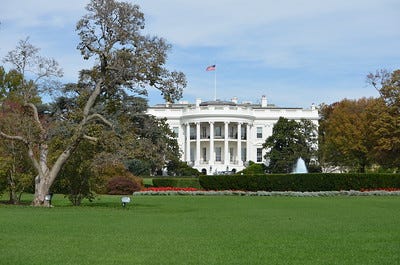#93: CIVICS 101: The Executive Branch
Q&A #93: How is the Exective Office of the President?
Our American Government
Our American Government is a small book published by the House of Representatives for citizens and those who seek a greater understanding of the American interpretation of democracy. It follows a question-and-answer format and covers a broad range of topics dealing with the three branches of our Government, the electoral process, and the role of political parties.
The Savvy Citizen is reproducing the 169 questions-and-answers through a series of posts called Civics 101. Each post will contain the Q&A as well as some additional commentary to add historical context, fun facts, or anything we believe will add to our collective understanding of these topics.
Think of it as your adult Civics class but without the test!
Let’s keep at it.
SECTION: The Executive Branch
Q&A #93: What is the Executive Office of the President?
Formally established in 1939, the Executive Office of the President consists of satellite offices and agencies that assist the President in the exercise of various statutory responsibilities. Later, as conditions merited, such units were abolished or transferred to program departments and agencies of the executive branch.
My Thoughts
The Executive Office of the President is simply a part of the Executive Branch of government; they aren’t the same thing. The White House’s website explains the Executive Office of the President as follows:
To provide the President with the support that he or she needs to govern effectively, the Executive Office of the President (EOP) was created in 1939 by President Franklin D. Roosevelt. The EOP has responsibility for tasks ranging from communicating the President’s message to the American people to promoting our trade interests abroad.
The EOP, overseen by the White House Chief of Staff, has traditionally been home to many of the President’s closest advisers. While Senate confirmation is required for some advisers, such as the Director of the Office of Management and Budget, most are appointed with full Presidential discretion. The individual offices that these advisors oversee have grown in size and number since the EOP was created. Some were formed by Congress, and others were added as the President has needed them.
Perhaps the most visible parts of the EOP are the White House Communications Office and Press Secretary’s Office. The Press Secretary provides briefings for the media on the President’s activities and agenda. Less visible to most Americans is the National Security Council, which advises the President on foreign policy, intelligence, and national security.
There are also several offices responsible for the practicalities of maintaining the White House and providing logistical support for the President. These include the White House Military Office, which is responsible for services ranging from Air Force One to the dining facilities, and the Office of Presidential Advance, which prepares sites remote from the White House for the President’s arrival.
Many senior advisors in the EOP work near the President in the West Wing of the White House. However, the majority of the staff is housed in the Eisenhower Executive Office Building, just a few steps away and part of the White House compound.
Back next time with Q&A #94: Is the U.S. President comparable to a reigning monarch, a prime minister, or a premier?
Meanwhile, don’t forget that we’re organizing the post links on a single page available here.
xo,
Kelley for the Savvy Citizen Team
May 12, 2025




